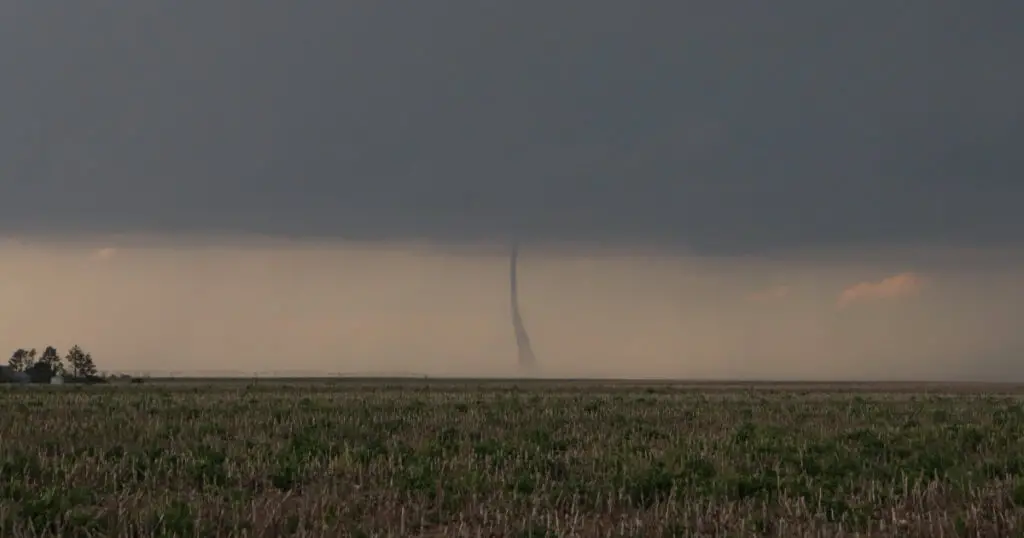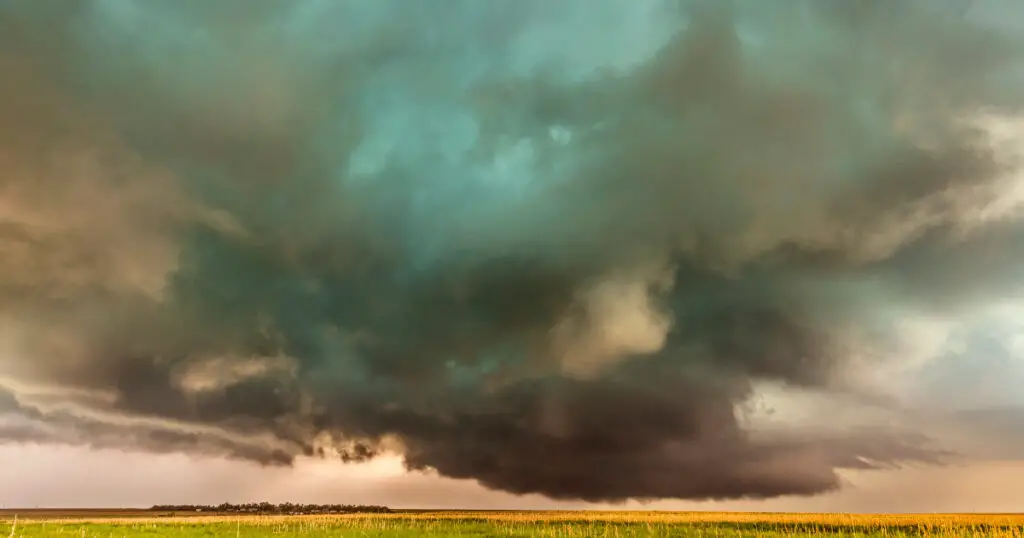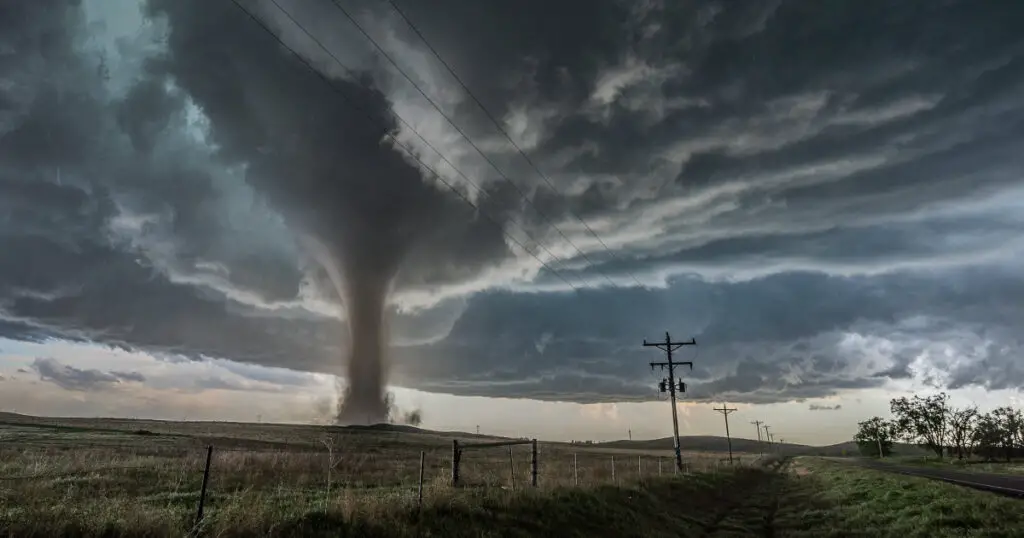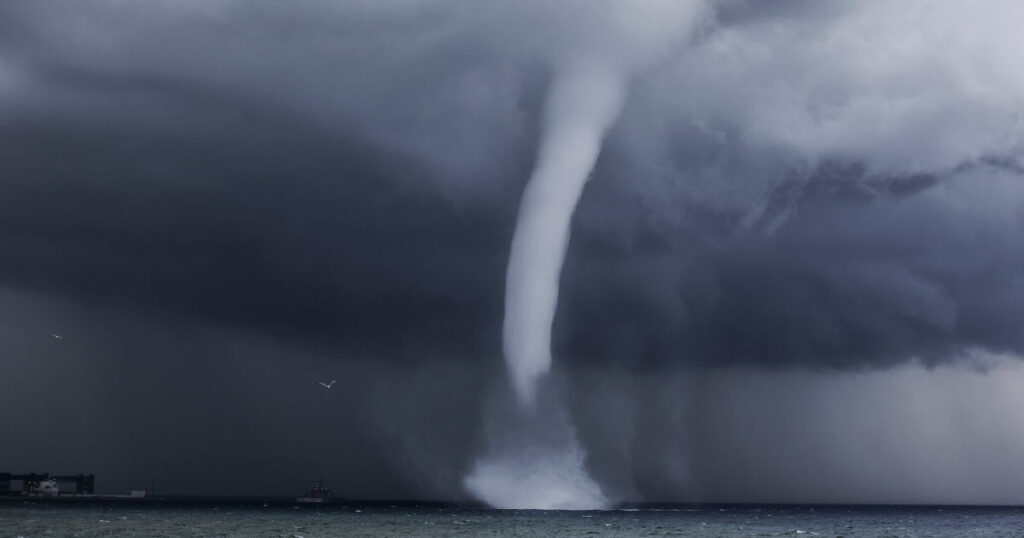Landspout tornadoes are a type of tornado with a condensation funnel that is narrow and rope-like in shape. This kind of tornado develops while a thunderstorm cloud is still in the growth process and when there is a lack of rotating updraft. Rotating updraft is a spinning motion that begins near the ground level.
So What Is a Landspout Tornado Exactly?
Any type of non-supercell tornado is defined as a landspout tornado. Non-supercell tornadoes are tornadoes that come from non-supercell thunderstorms. This kind of tornado are usually weaker in strength and do not last as long as supercell tornadoes.
Landspouts are not the only kind of non-supercell tornado. Another non-supercell tornado is the QLCS tornado.
About 20% of tornadoes are QLCS tornadoes. They come from thunderstorms that are “quasi-linear convective systems”, hence the name QLCS. QLCS tornadoes tend to happen late at night and during the early hours of the morning.
Landspouts vs Waterspouts
You may have already heard of waterspout tornadoes and are wondering how they differ from landspouts. Landspout tornadoes and waterspout tornadoes have extremely similar mechanisms and look like each other.
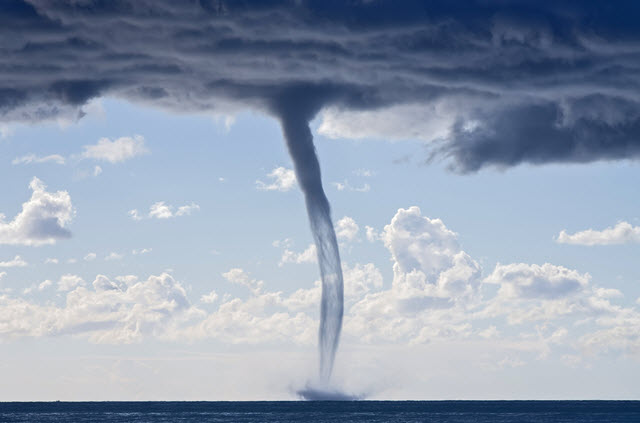
The term “landspout” was created by a meteorologist called Howard B. Bluestein in 1985. While waterspout tornadoes form over the water, landspout tornadoes form over land. They are able to form even when a thunderstorm is not visible.
These kinds of tornadoes are occasionally not readily visible.
Landspout Tornado Duration and Damage
While landspout tornadoes do not tend to last very long, they are able to cause damage to everything in their path. A landspout tornado will probably not last any longer than about fifteen minutes.
Landspout tornadoes are able to cause damage to things in their path despite the fact that they lack strong winds. While the damage may not be especially serious, it is certainly a reality. One reason why landspout tornadoes do not have strong wind strength is because they develop at ground level. This kind of tornado usually has weak wind strength and is generally at the EF-0 level.
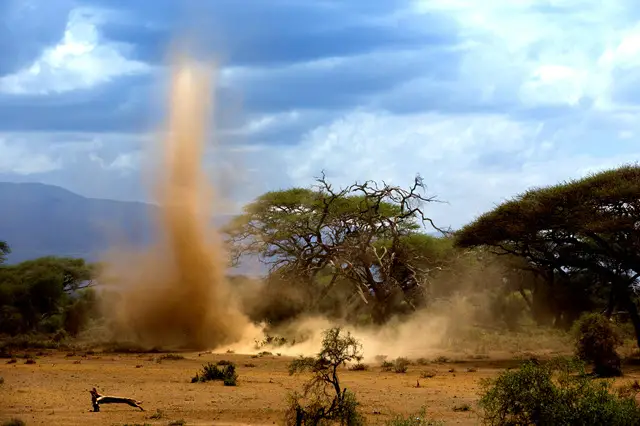
You should be aware, though, that the wind speed within the tornado can be as high as 100 miles per hour. Doppler weather radar is not able to detect landspout tornadoes. This is why it’s so difficult to provide warnings about them.
Landspout tornadoes are virtually impossible to predict. This is because they can happen at any time of the year. Also, they are extremely hard to see and can even be invisible to the naked eye. One way these tornadoes can be seen is a result of the dust and dirt that they kick up. Spring and summer tend to be the times of year when landspout tornadoes are most likely to happen.
Safety and Landspout Tornadoes
Like with other tornadoes, it’s important to take shelter from a landspout tornado. It’s best to go down to your basement as it is an underground shelter. Be as far away from windows and outside walls as you possibly can when sheltering form a tornado.
If you do not have a basement, make sure you are at least on the lowest floor of your house and as far away as you can get from outside walls and windows. If glass windows break and you are near them, you can be severely injured.
Conditions Needed for a Landspout Tornado
A landspout tornado can be generated during a cumulus congestus cloud’s growth stage. This is because of stretching upward of boundary layer vorticity that brings it into the updraft of the cumulus congestus.
Landspout tornadoes are much weaker and smaller than other kinds of tornadoes, especially supercell tornadoes, and they are not able to create a mesocyclone. This is one reason why it’s so difficult for Doppler radar to detect the conditions they need to form.
How a Landspout Tornado Forms
In order for landspout tornadoes to form, there must be spinning air (also called vorticity) at the Earth’s surface. This vorticity can be a product of wind shear or the convergence of air with different speeds or from different directions.
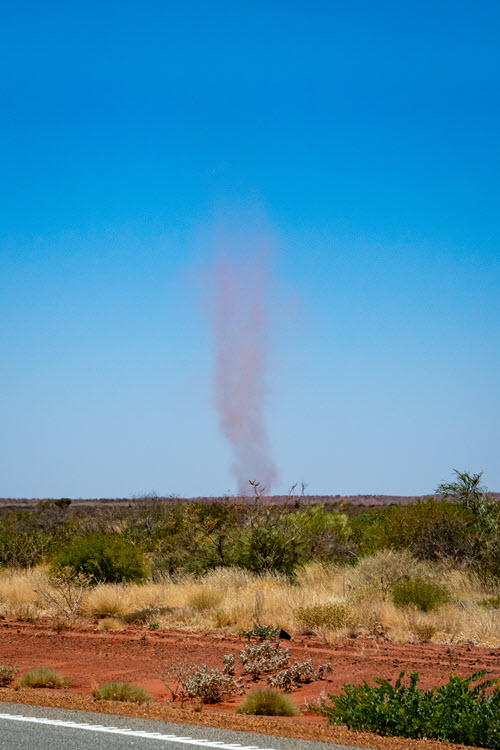
After this condition is in place, there can be formation of a storm cloud above the spinning air. Air updraft is the force that pulls the spinning air and creates a vertical shape. When this occurs, the spinning air is in tube form.
| Related Posts |
|---|
Where are Landspout Tornadoes Most Likely to Happen?
The High Plains is the region of the United States were landspout tornadoes are most likely to occur. This region includes eastern Colorado, western Kansas, western Nebraska, southwestern South Dakota, southeastern Wyoming, eastern Montana, western Oklahoma, eastern New Mexico, and a bit south of the Texas Panhandle. Be aware, however, that this kind of tornado has occurred in many different parts of the country.
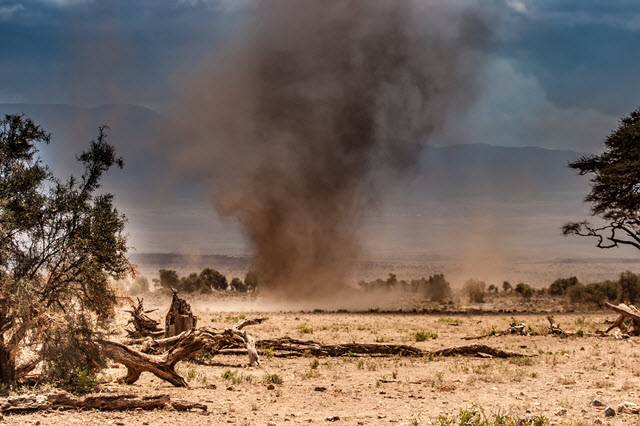
Areas where landspouts are most likely to develop have driver climates with significant low-level instability and high-based storms. Although most landspout tornadoes are short it is sometimes possible for them to last longer than 15 minutes. On rare occasions, they can cause significant damage.
The state in which landspouts are more likely to develop is Colorado. There are usually about 46 tornadoes each year in that state, and most of those tend to be landspouts. Many landspouts are invisible and can only be detected by way of swirling dirt and debris lifted from the ground.
Landspout Tornado vs Dust Devil
Landspouts have similarities to dust devils (they both involve fast-moving vortexes of air that are vertical in nature), but they are definitely tornadoes. The term often used by the National Weather Service to describe landspout tornadoes is “dust tube tornado,” so the confusion between the two terms is understandable. But a landspout tornado is not a dust devil.

A landspout tornado is different from other kinds of tornadoes in the fact that it is able to develop even when there aren’t any thunderstorms in the area.
Always Take Landspout Tornadoes Seriously
Remember that landspouts are tornadoes and you should take them seriously. Keep yourself safe when this kind of weather event occurs. Always be aware of tornado safety and stay away from windows and outside walls when there is a tornado. It’s best to take shelter in an underground room, such as a basement.
